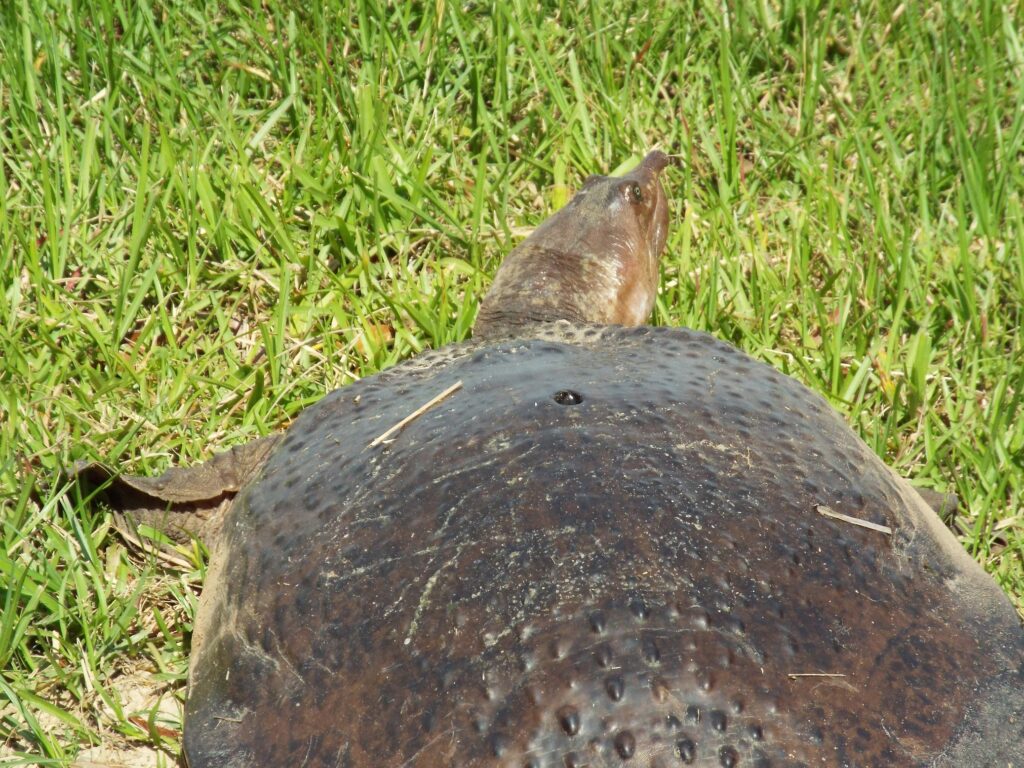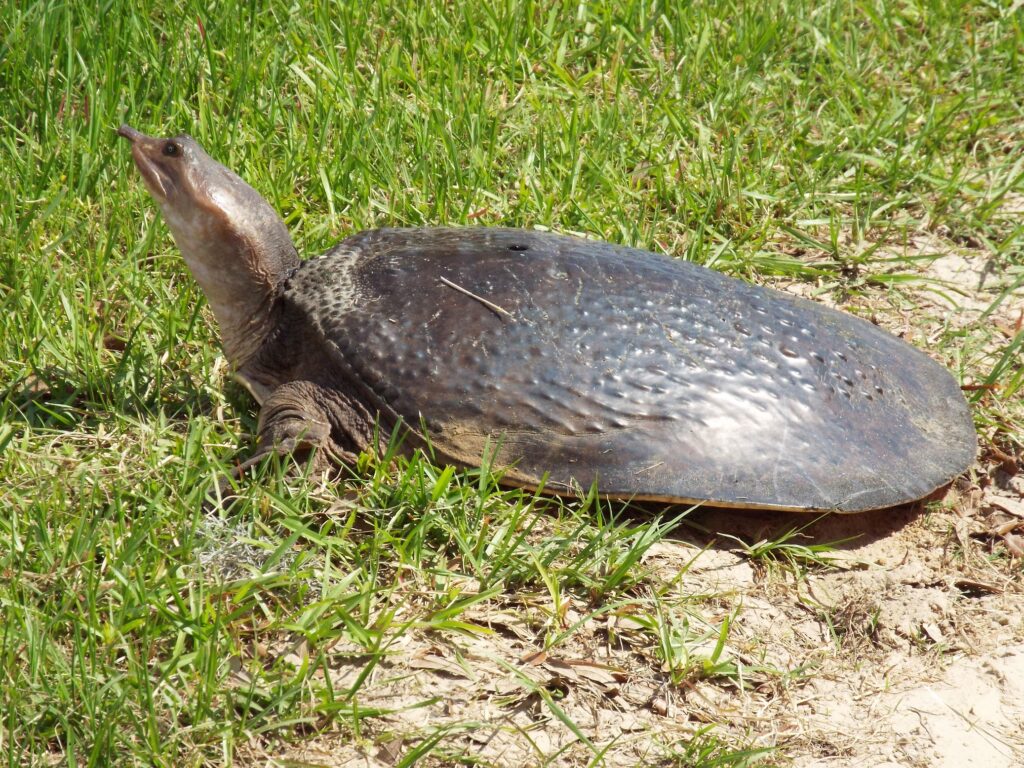


This week for Flora and Fauna Friday we have our weirdest and flattest turtle, the Florida Softshell (Apalone ferox).
The Florida Softshell is found throughout Florida, a bit of Alabama, lower Georgia, and up to Edisto and Johns Islands here in South Carolina. It is one of our two species of softshell turtle, the other being the Spiny Softshell (A. spinifera) which is found throughout South Carolina. Of the two, the Florida Softshell is bigger, with females being able to reach two-feet in length. Males are half that size. The Spiny Softshell is more partial to streams and rivers, where the Florida Softshell prefers slower moving waters, like lakes, large ponds, swamps, freshwater marshes, rice impoundments, and even large ditches. The Florida Softshell is a strange looking beast, especially for a turtle. Its face has a long and narrow pig-nose, tall forehead, dark and piercing eyes, long neck, pink skin, and heavy lips that partially hide a dark, “toothy” grimace. Its legs are flabby and flappy and its shell is flat, wide, leathery, and covered in small lumps. However, these characteristics help them adapt to their preferred habitats.
Much like snapping turtles, our Softshell Turtles are ambush hunters. They prefer to lie in wait and let food come to them. They do this by burying themselves in sand or mud in shallow water, leaving only their head poking out. When something comes within range, they use their long neck and strong beak to strike out and grab it. Florida Softshells typically hunt crustaceans, snails, fish, frogs, and any other small creatures that come within range. They also use their long neck to reach up to breathe while buried in shallow water while they use that pointed nose like a snorkel. Those eyes up on top of their head allow them not only to look up out of the water if needed but also to bury their head partially for added camouflage. Their shell, although covered in skin, is still solid bone underneath. However, the edges of the shell lack bones and are hence flexible, allowing them to better navigate tight spaces without getting stuck and providing a better range of motion for their legs. Their flat shell, relatively flexible body, and large webbed feet also make them excellent swimmers, allowing them to cut through swift currents and fast moving waterways. They’re also surprisingly fast on land when they need to be. You’re most likely to spot a Florida Softshell in early summer, when they come on land to lay eggs, or you may catch a glimpse of one sunning along a bank throughout summer and fall.